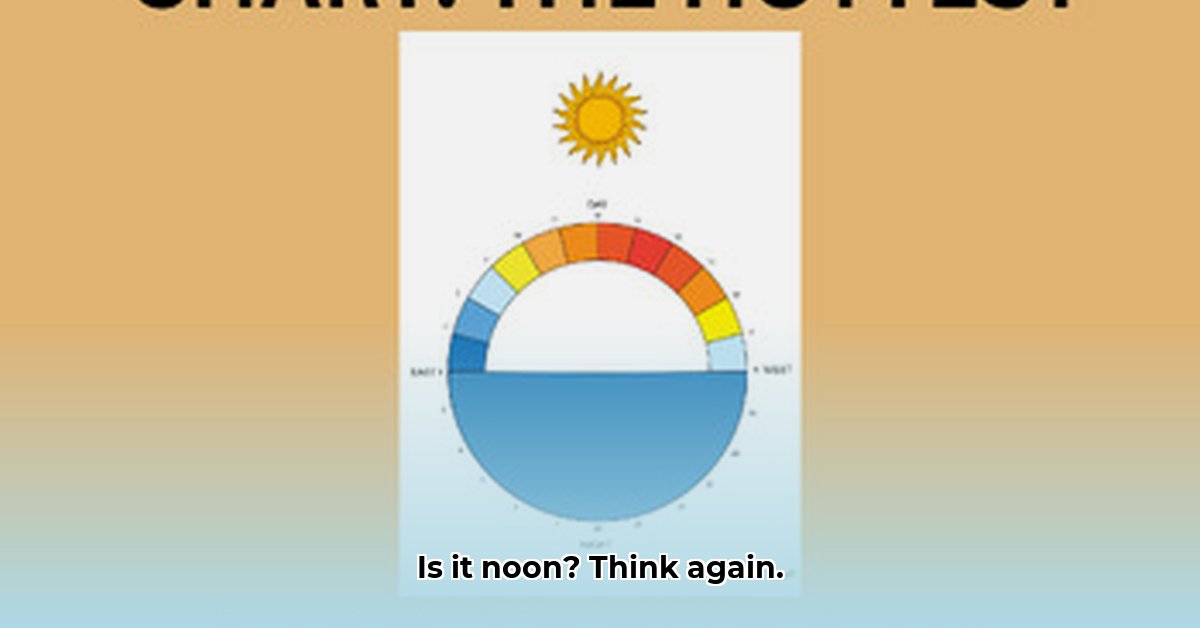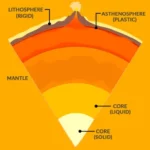Why does the afternoon often feel like a furnace even when the sun isn’t directly overhead? The answer lies in the Earth’s thermal inertia—its ability to store and release heat. For a clearer understanding of heat vs. temperature, see this helpful article: heat and temperature. Like a slowly warming oven, the Earth absorbs the sun’s energy and continues to heat up even after solar noon, typically reaching peak temperatures between 3 p.m. and 5 p.m. This complex interplay of energy, influenced by a variety of factors, dictates our daily temperature experience.
Beyond the Sun: Unraveling the Factors Behind Peak Temperatures
While solar radiation is the primary driver of warming, several other factors contribute to the timing and intensity of peak temperatures. Cloud cover acts as a natural sun shield, moderating incoming solar radiation and potentially shifting the warmest point earlier in the day. Wind, a constant disruptor, can either whisk away accumulated heat, leading to cooler temperatures, or allow heat to build up on calm days. Geography plays a crucial role, with coastal areas, moderated by the ocean’s vast thermal inertia, experiencing less extreme temperature fluctuations compared to inland regions. Finally, seasonal variations, characterized by differing durations of sunlight, influence the timing and magnitude of daily temperature peaks. Understanding these intricacies is crucial for everything from issuing public health advisories during heatwaves to optimizing agricultural practices.
The Earth’s Energy Budget: A Balancing Act of Incoming and Outgoing Radiation
The sun, our primary energy source, bathes the Earth in shortwave radiation, driving the warming process. However, the Earth isn’t just a passive recipient; it continuously emits longwave radiation, losing heat to space. The hottest part of the day occurs when these two energy flows—incoming shortwave and outgoing longwave radiation—reach a dynamic equilibrium. This intricate dance of energy determines our daily temperature patterns. Conversely, the coldest point, often mistakenly assumed to be midnight, typically occurs an hour or so after sunrise. This delay reflects the Earth’s thermal inertia and the gradual return of solar radiation, which eventually overcomes the cooling trend.
Microclimates and More: Predicting Temperature Fluctuations
Predicting temperature variations with accuracy requires a nuanced understanding of microclimates. These localized areas, shaped by factors such as vegetation, urbanization, and topography, possess unique temperature profiles. Cities, for example, often experience the “urban heat island” effect, where buildings and paved surfaces absorb and retain heat, resulting in significantly higher temperatures compared to surrounding rural areas. Accurate temperature prediction relies on a multifaceted approach, considering factors like surface characteristics (dark surfaces absorb more heat than light surfaces), prevailing weather patterns (wind speed and cloud cover), and utilizing sophisticated weather models that incorporate these variables. This information is essential for a wide range of applications, from designing sustainable urban environments to enhancing agricultural productivity.
The Daily Temperature Cycle: Key Takeaways for a Deeper Understanding
- Peak heat isn’t at noon: The Earth’s thermal inertia delays the hottest point to the afternoon.
- Microclimates matter: Local variations significantly influence temperature patterns.
- Thermal inertia is fundamental: It governs how quickly a surface heats and cools.
- Urban heat islands create distinct microclimates: Cities often experience elevated temperatures.
- Temperature prediction is complex: Accurate forecasts consider location, surface properties, and weather systems.
Understanding the science behind daily temperature fluctuations isn’t just about satisfying curiosity; it’s about equipping ourselves with the knowledge to navigate a world impacted by climate change, from protecting personal health during extreme heat events to developing sustainable agricultural practices. By understanding the Earth’s daily thermal rhythm, we can better adapt to and mitigate the challenges of a changing climate.
















